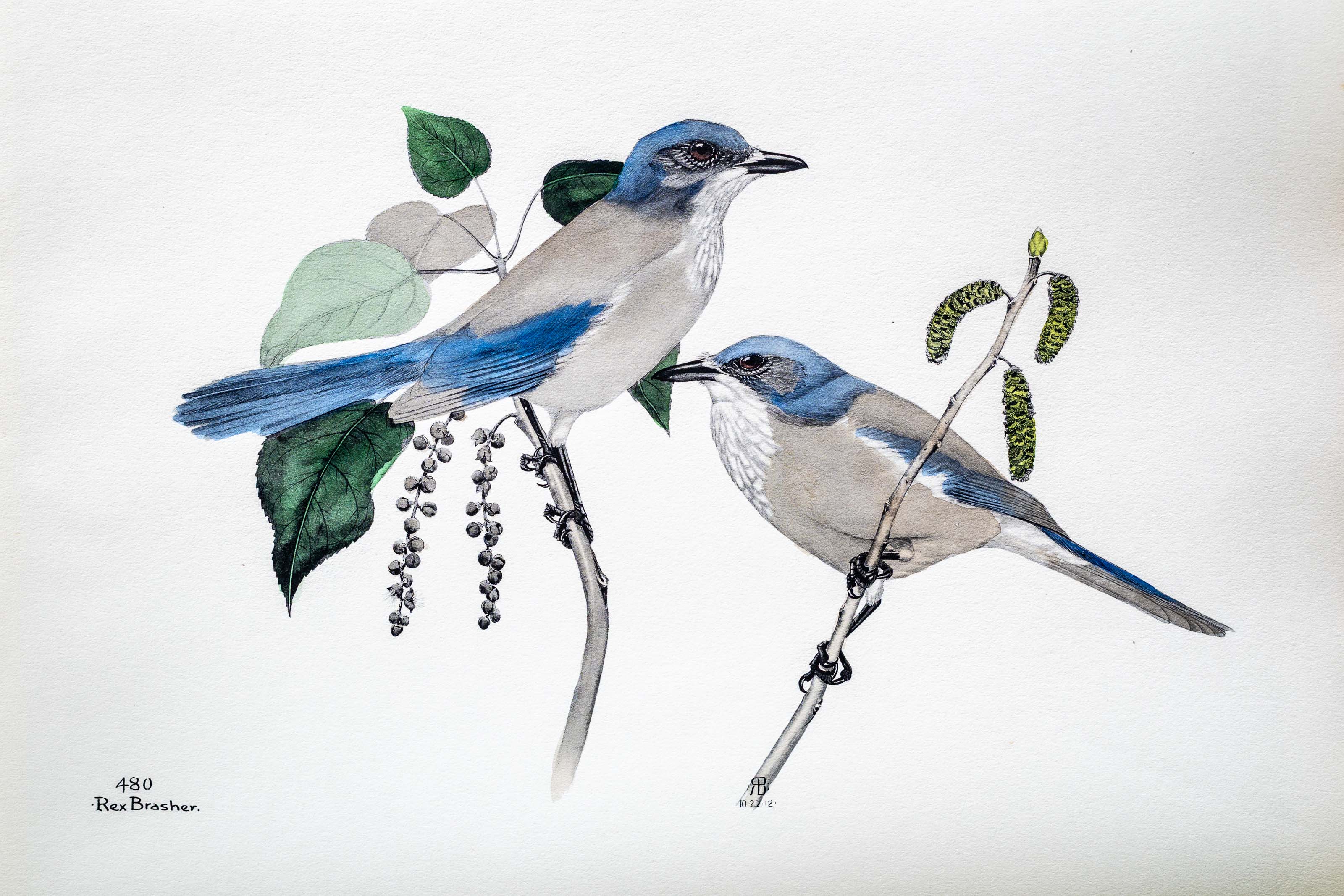
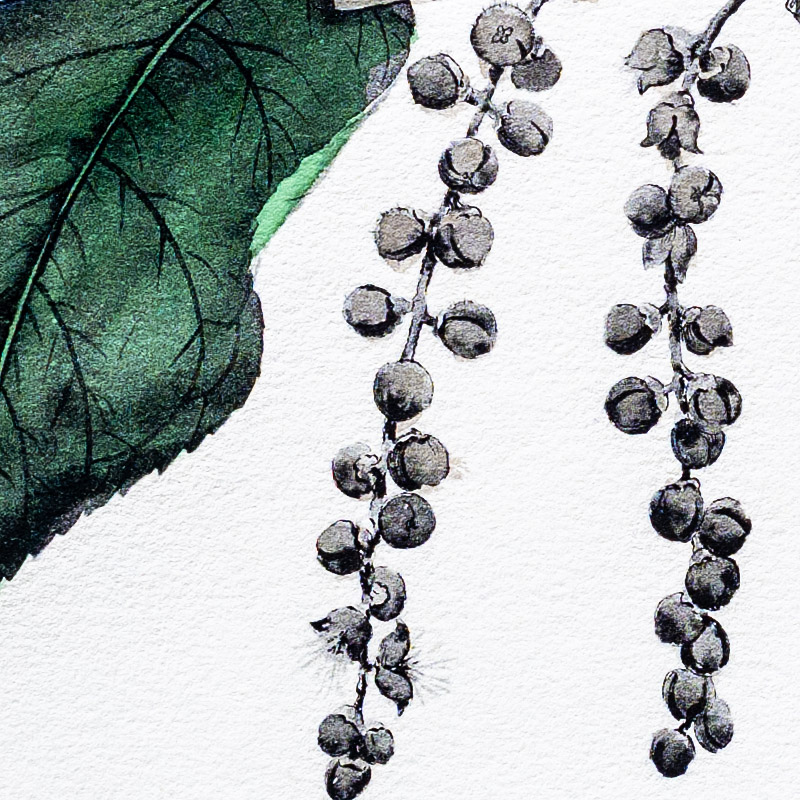
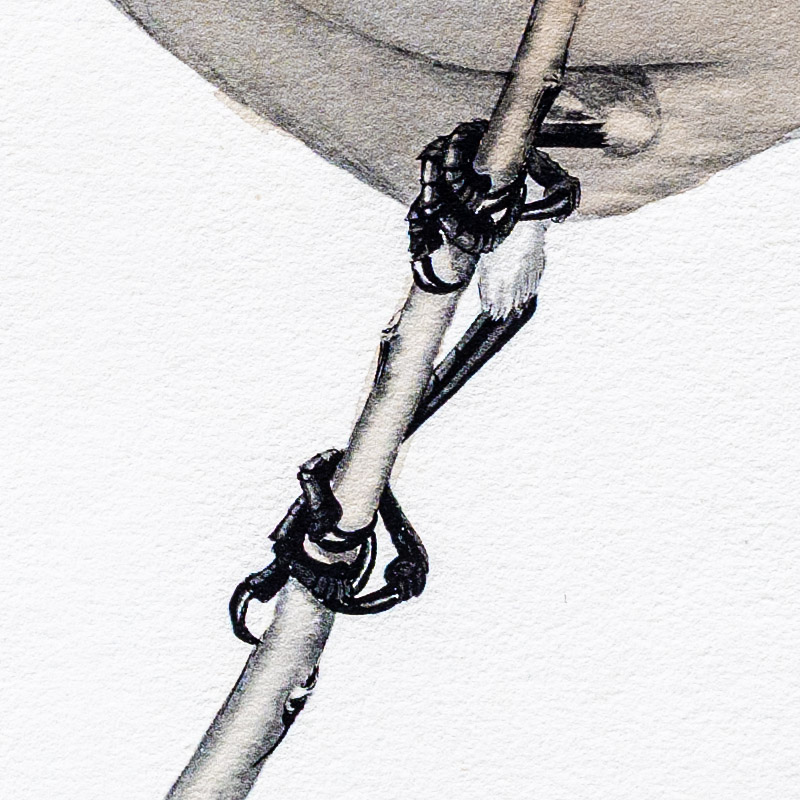
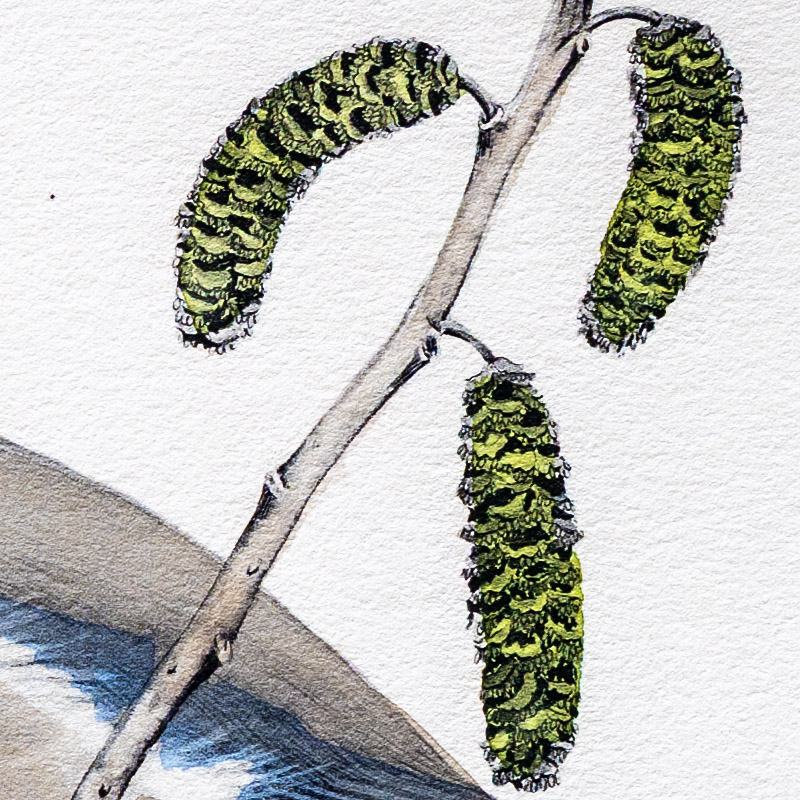
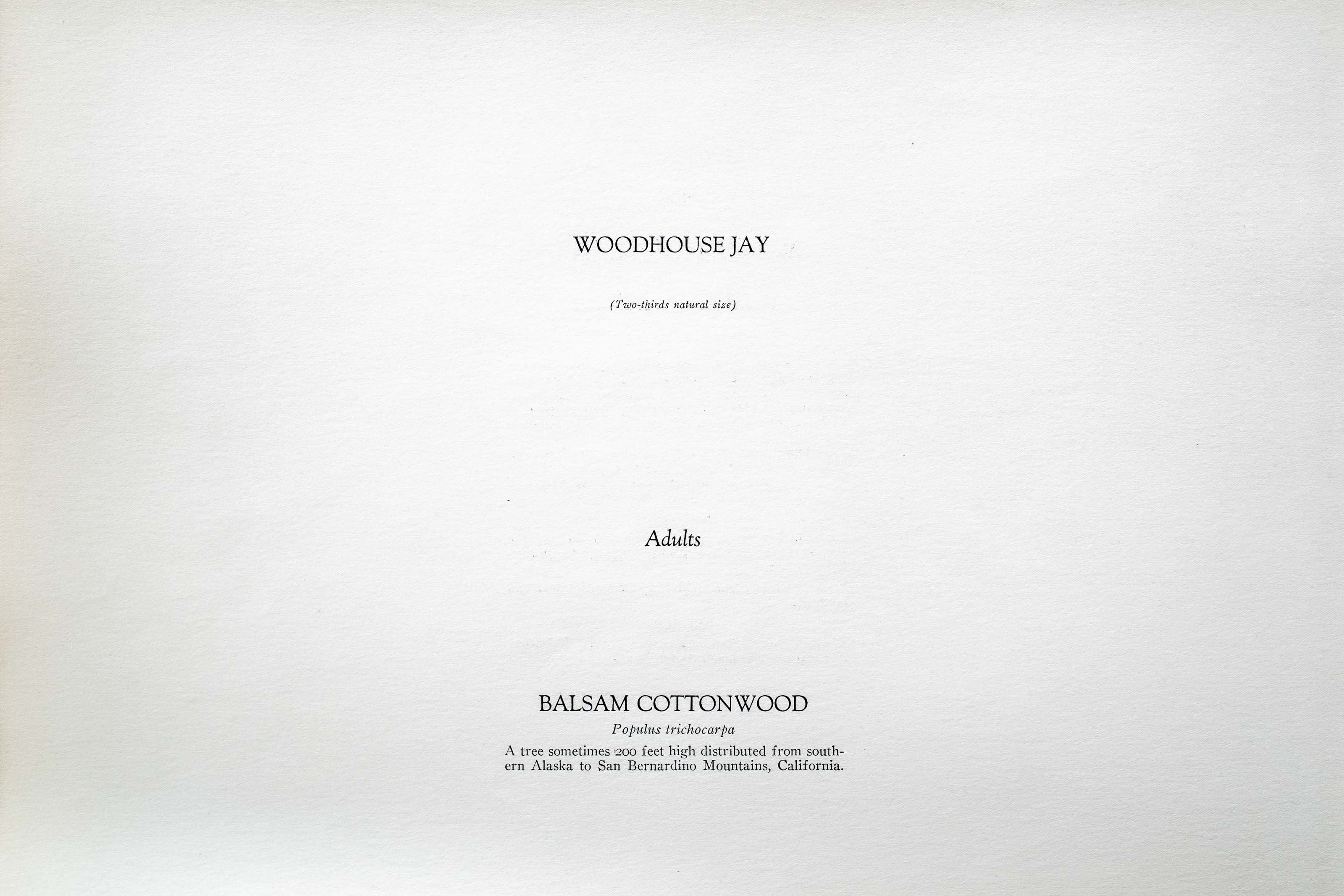
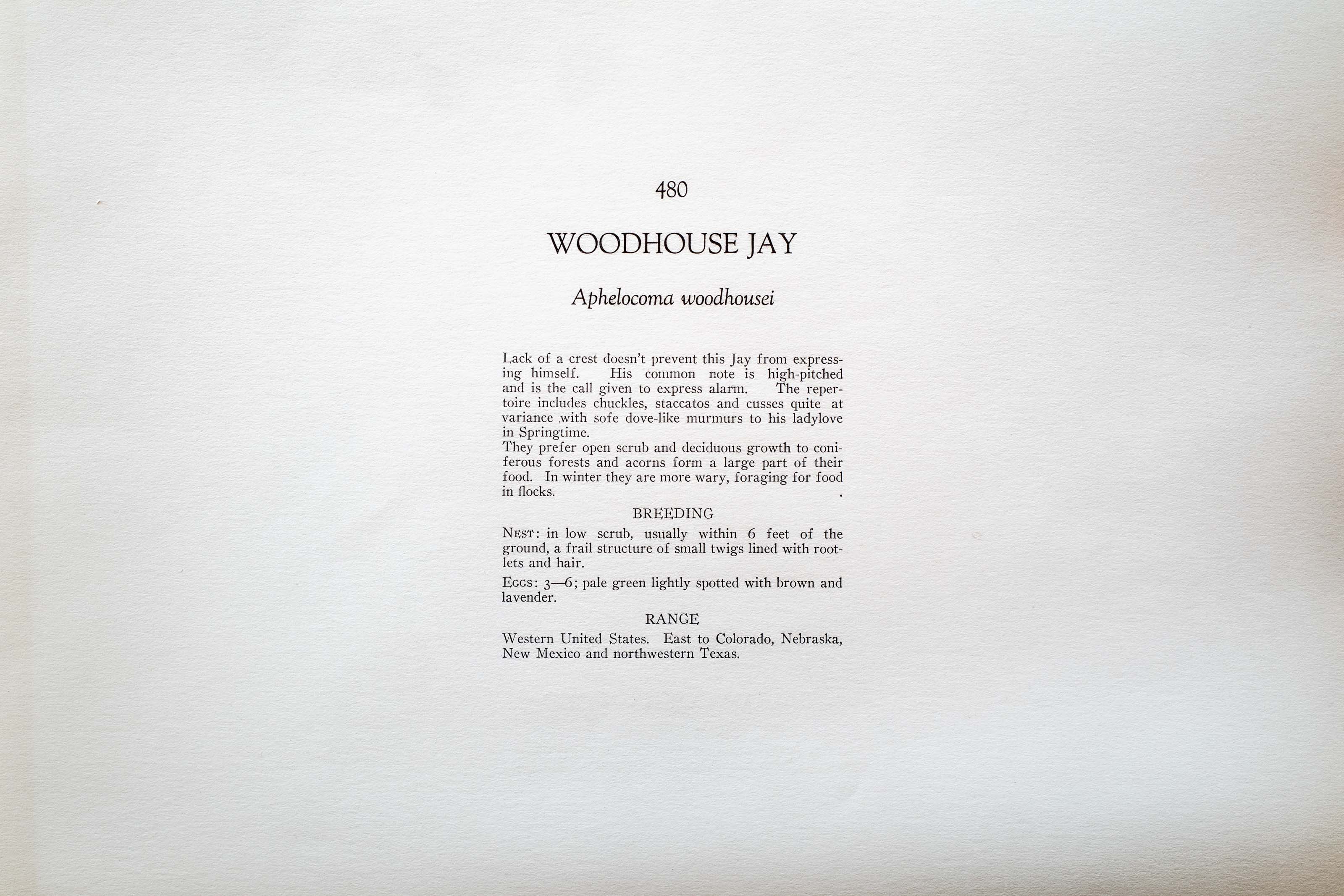

1911
1931
8
480
A team of dedicated board members, volunteers, and student interns has published every page in Volume 9. This volume includes 360 images of paintings and lyrical descriptions of birds, now available online for everyone to enjoy anywhere in the world. This is a monumental task. Each volume requires approximately 400 hours to photograph, edit, transcribe, catalog, and publish online. We need your support to complete this work.
If you're tech-savvy, have a good eye, are meticulous with details, and love structured data, please consider volunteering by emailing us at hello@rexbrasher.org.
We encourage all bird lovers and supporters to consider a monetary donation to support our mission to make Rex's work available for everyone. You can provide a one-time or recurring donation online.
Lack of a crest doesn't prevent this Jay from expressing himself. His common note is high-pitched and is the call given to express alarm. The repertoire includes chuckles, staccatos and cusses quite at variance with sofe dove-like murmurs to his ladylove in Springtime.
They prefer open scrub and deciduous growth to coniferous forests and acorns form a large part of their food. In winter they are more wary, foraging for food in flocks.
NEST: in low scrub, usually within 6 feet of the ground, a frail structure of small twigs lined with rootlets and hair.
EGGS: 3–6; pale green lightly spotted with brown and lavender.
Western United States. East to Colorado, Nebraska, New Mexico and northwestern Texas.
A tree sometimes 200 feet high distributed from southern Alaska to San Bernardino Mountains, California.